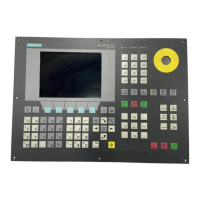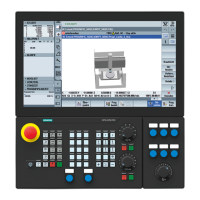1.8.2 Addressing NC variables
Addressing the NC variables starts with the path section nck.
This section is
followed by the data address; its structure should be taken from the List Manual
NC Variables and Interface Signals.
Example:
<LET name = "tempStatus"></LET>
<OP> tempStatus ="nck/channel/state/chanstatus" </OP>
1.8.3 Generating NC/PLC addresses during the runtime
It is possible to generate an address identifier during runtime.
In this case, the content of a string variable is used as address in an operation statement as
well as in the nc.cap.read and nc.cap.write functions.
Observe the following for this type of addressing mode:
● Write the variable names in quotation marks.
● Use three ‚$’ characters as prefix for variable names.
Syntax:
"$$$variable name"
Example:
<PRINT name="var_adr" text="DB9000.DBW%d"> 2000</PRINT>
<OP> "$$$var_adr" = 1 </OP>
1.8.4 Addressing drive components
Addressing the drive components starts with the path section drive.
Then the drive device is specified:
CU
DC
The parameter to be set is added to this section.
Example:
<LET name="r0002_content"></LET>
<LET name="p107_content"></LET>
<!— Reading of value r0002 on the CU ->
<OP> r0002_content = "drive/cu/r0002" </OP>
<OP> r0002_content = "drive/cu/r0002[CU1]" </OP>
Generating user dialogs
1.8 Addressing components
Easy XML
76 Programming Manual, 10/2015, 6FC5397-3DP40-5BA3

